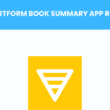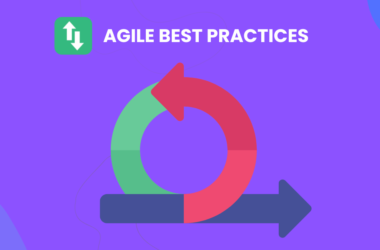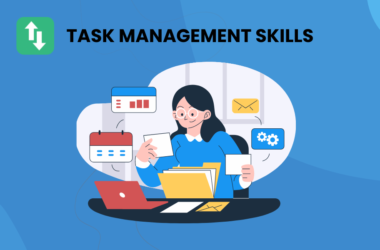Table of Contents Show
For many organisations, success brings with it a constant stream of new projects, deadlines, and demands. But as exciting as growth can be, it often comes at a price—especially for the people expected to deliver it. When teams are regularly stretched too thin, it doesn’t take long for stress to build and burnout to follow. Eventually, even the most loyal, hardworking employees begin to question whether it’s worth staying.
The challenge lies in striking a balance between productivity and people’s well-being. That’s where effective resource management comes in. It’s not just about filling schedules—it’s about making sure your team is supported, workloads are fair, and the business can thrive without burning through its talent.
What Is Resource Management Software and Why Does It Matter?
Resource management software is designed to give leaders a bird’s-eye view of how their teams are being utilised. At its core, it helps answer crucial questions: Who’s available? Who’s overloaded? Do we have the right skills for the job at hand? Are we planning ahead or just reacting?
Retain’s real time resource management software takes this a step further. It doesn’t just show what’s happening—it enables action. Managers can assign work based on each team member’s capacity, skill set, and availability, helping to avoid overburdening individuals or creating bottlenecks that slow everything down.
The beauty of Retain lies in its simplicity. The intuitive dashboard means you don’t need to be a data analyst to use it effectively. With just a few clicks, managers can build balanced schedules, prepare for future projects, and pivot quickly when things change. This agility helps teams avoid burnout before it starts, while also keeping projects on track and clients happy.
The Hidden Cost of Overworking Employees
We’ve all been there—pulling long hours, saying yes to every request, trying to keep the plates spinning. But when this becomes the norm rather than the exception, it’s a warning sign. Chronic overwork erodes motivation, creativity, and eventually, a person’s health.
A landmark study by Gallup revealed that 76% of employees experience burnout at some point in their careers. And we’re not just talking about feeling a bit tired on a Friday afternoon. Burnout can lead to prolonged stress, anxiety, disengagement, and even serious physical or mental health issues.
It’s also contagious. When one team member begins to struggle, others often pick up the slack, leading to a domino effect. Before long, the entire team is under pressure, morale is in decline, and productivity suffers across the board.
That’s why it’s so important for organisations to take a proactive approach. With a tool like Retain, managers can spot workload patterns early, see where pressures are building, and take corrective action. Whether that means shifting deadlines, redistributing tasks, or encouraging someone to take a break, these small interventions can make a big difference.
The Direct Link Between Burnout and Turnover
Burnout doesn’t just harm individuals—it hits businesses where it hurts. Replacing skilled employees is costly, disruptive, and time-consuming. And the truth is, many resignations are avoidable.
According to the Work Institute, 22% of employees cite workload and career development concerns as their reason for leaving. When people feel like they’re constantly under the pump with no room to grow or recover, it becomes a matter of when—not if—they’ll leave.
Retain’s platform helps tackle this issue head-on. By visualising how workloads are spread across the business, leaders gain the insight needed to prevent burnout-triggered turnover. It’s about being able to ask, “Is this person doing too much?” before they hand in their notice.
Even better, the software supports long-term planning. Leaders can identify trends, build more sustainable work patterns, and give employees the confidence that their well-being is being taken seriously. In turn, that fosters loyalty, engagement, and a stronger organisational culture.
Why Happier Teams Mean Happier Clients
There’s a clear ripple effect between how employees feel and how customers are treated. A motivated, well-supported team delivers better results, communicates more clearly, and solves problems more creatively.
Conversely, when staff are exhausted or disillusioned, service suffers. Deadlines get missed, mistakes happen, and clients start to feel the frustration, too.
This is where Retain’s forecasting and scheduling features shine. They allow businesses to plan realistically, with enough flexibility to adapt without chaos. That means fewer last-minute changes, reduced stress, and a more reliable client experience.
Think of it as future-proofing your team. When everyone knows what’s coming up, who’s responsible for what, and how the work fits together, things run more smoothly. That predictability translates into trust, both within the team and with your clients.
How to Use Resource Management to Reduce Burnout: Practical Tips
Preventing burnout isn’t just about having the right software—it’s also about embedding the right habits. Here are a few actionable ways to make resource management part of your everyday leadership:
1. Regularly Review Workloads
Use tools like Retain to keep a close eye on how work is being distributed. Look out for consistently overloaded individuals or uneven task allocation, and rebalance where necessary.
2. Promote Open Dialogue
Create a culture where it’s safe to say, “I’m at capacity.” Encourage team members to speak up if they’re feeling overwhelmed and respond supportively when they do.
3. Offer Flexibility
Flexibility isn’t a perk anymore, it’s an expectation. Whether that means remote work, flexible hours, or time-shifted days, offering options can help people manage their energy better.
4. Recognise and Reward Contributions
People want to feel seen. Make a habit of celebrating wins, acknowledging effort, and showing appreciation not just for big milestones, but for everyday excellence.
5. Plan Ahead, Not Just Week by Week
Use forecasting tools to look several months ahead. This helps avoid stacking projects too closely or overloading particular team members during peak periods.
6. Build in Breathing Space
Don’t fill every hour on the schedule. Leave room for the unexpected—because there’s always something. This buffer helps reduce stress and keeps the team agile.
Final Thoughts: A Healthier Way to Work
Burnout and staff turnover aren’t just HR issues—they’re business issues. And like any business problem, they can be addressed with the right tools, mindset, and strategy.
By integrating resource management software like Retain, organisations can make smarter decisions about how work gets done, who does it, and how to keep everyone engaged along the way. It’s about shifting from reactive firefighting to proactive planning—something that benefits people, projects, and profits alike.
Ultimately, the goal isn’t to squeeze every drop of productivity out of your team. It’s to build a workplace where people want to stay, contribute, and grow. That’s where long-term success truly begins.
Author Bio:
Reece. O
Reece is a content executive who specialises in writing about innovative and market-leading B2B software designed to boost efficiencies and company profits.
More Readings:









